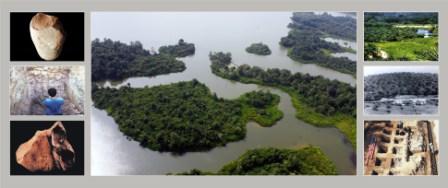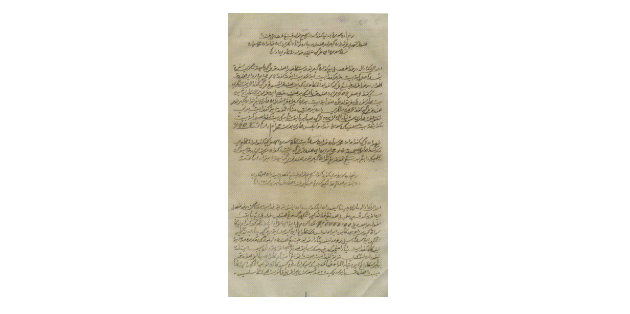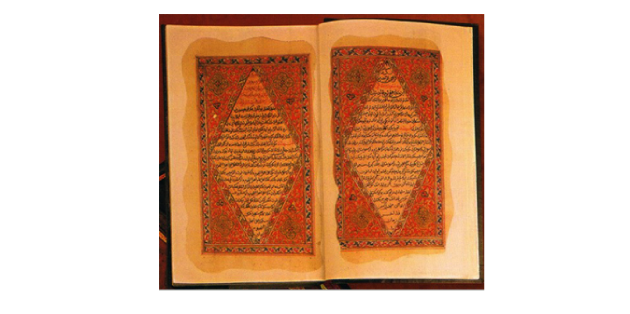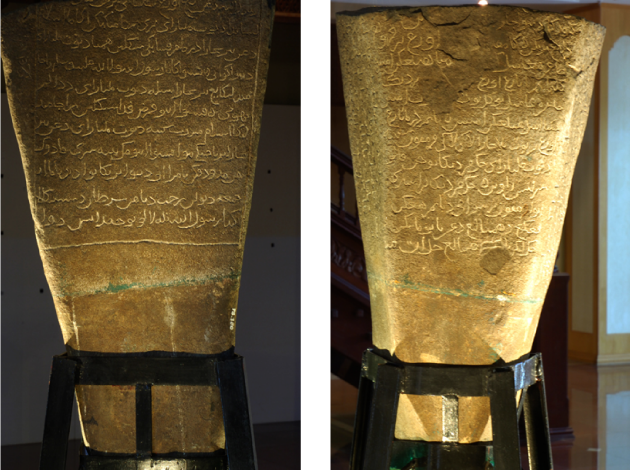|
WORLD HERITAGE SITE

Taman Negara Mulu, Sarawak
Kategori Semulajadi
2 December 2000
Important both for its high biodiversity and for its karst features, Gunung Mulu National Park, on the island of Borneo in the State of Sarawak, is the most studied tropical karst area in the world. The 52,864-ha park contains seventeen vegetation zones, exhibiting some 3,500 species of vascular plants. Its palm species are exceptionally rich, with 109 species in twenty genera noted. The park is dominated by Gunung Mulu, a 2,377 m-high sandstone pinnacle. At least 295 km of explored caves provide a spectacular sight and are home to millions of cave swiftlets and bats. The Sarawak Chamber, 600 m by 415 m and 80 m high, is the largest known cave chamber in the world.
 ( sila klik di sini untuk maklumat lanjut ) ( sila klik di sini untuk maklumat lanjut ) |
| |
|

Taman Negara Kinabalu, Sabah
Kategori Semulajadi
2 Dicember 2000
Kinabalu Park, in the State of Sabah on the northern end of the island of Borneo, is dominated by Mount Kinabalu (4,095 m), the highest mountain between the Himalayas and New Guinea. It has a very wide range of habitats, from rich tropical lowland and hill rainforest to tropical mountain forest, sub-alpine forest and scrub on the higher elevations. It has been designated as a Centre of Plant Diversity for Southeast Asia and is exceptionally rich in species with examples of flora from the Himalayas, China, Australia, Malaysia, as well as pan-tropical flora.
 ( sila klik di sini untuk maklumat lanjut ) ( sila klik di sini untuk maklumat lanjut ) |
| |
|

Melaka & Georgetown
Kategori Kebudayaan
7 July 2008
Melaka and George Town, historic cities of the Straits of Malacca (Malaysia) have developed over 500 years of trading and cultural exchanges between East and West in the Straits of Malacca. The influences of Asia and Europe have endowed the towns with a specific multicultural heritage that is both tangible and intangible. With its government buildings, churches, squares and fortifications, Melaka demonstrates the early stages of this history originating in the 15th-century Malay sultanate and the Portuguese and Dutch periods beginning in the early 16th century. Featuring residential and commercial buildings, George Town represents the British era from the end of the 18th century. The two towns constitute a unique architectural and cultural townscape without parallel anywhere in East and Southeast Asia.
 ( sila klik di sini untuk maklumat lanjut ) ( sila klik di sini untuk maklumat lanjut ) |
|

Tapak Arkeologi Lembah Lenggong
Kategori Kebudayaan
2012
Situated in the lush Lenggong Valley, the property includes four archaeological sites in two clusters which span close to two million years, one of the longest records of early man in a single locality, and the oldest outside the African continent. It features open-air and cave sites with Palaeolithic tool workshops, evidence of early technology. The number of sites found in the relatively contained area, suggests the presence of a relatively large, semi-sedentary population with cultural remains from the Palaeolithic, Neolithic and Metal ages.
 ( sila klik di sini untuk maklumat lanjut ) ( sila klik di sini untuk maklumat lanjut )
|
|
MEMORY OF THE WORLD INTERNATIONAL REGISTER

Surat-surat Sultan Abdul Hamid (Letters of the Sultan Abd Hamid Kedah) (1882-1943)
Pengiktirafan diberikan pada 2001
The records are unique in that they constitute the only available evidence of the Malay Sultanate prior to the advent of western-style colonialism. The records have a universal appeal in that they portray the precarious life of a State in transition, straddling between two powers in a world that is fast changing. Originating as they do from the Palace, the highest seat of administration in the state of Kedah in the nineteenth and early twentieth century, the records reflect the unified authority wielded by the Palace in all matters relating to Kedah state administration. The Palace may thus be said to have total influence on all aspects of the life of the people. The influence of the Palace, however is waning, as it is no longer able to control the destiny of the State on account of the need to submit itself to foreign powers far superior in might. The records are therefore useful to research from a number of perspectives, including social change, economics, politics, foreign relations, education, religion and customs. However, the Palace is not able to control the destiny of its own people.
 ( sila klik di sini untuk maklumat lanjut ) ( sila klik di sini untuk maklumat lanjut ) |
| |
|

Sejarah Melayu ( The Malay Annals)
Pengiktirafan diberikan pada 4 September 2001
The Sejarah Melayu or the Malay Annals are unique in that they constitute the only available account of the history of the Malay Sultanate in the fifteenth and early sixteenth century. They are in the nature of what may be termed as historical literature conveying a historical narration on the origins, evolution and demise of a great Malay maritime empire, with its unique system of government, administration and politics.
The Annals have universal appeal as they relate to a major transformation in the lives of the people of the Malay Archipelago from a Hindu-Malay matrix to an Islamic – Malay culture. Being an entrepot port, Melaka made rapid progress on account of its cosmopolitan population comprising merchants from India, China, Arabia, Portugal and various other nations of the world. They contributed to the social, economic and political evolution of the Malay Kingdom.
The Annals are therefore a vital source of information for scholars in various fields including sociology, anthropology, economics, politics, international relations, linguistics and literature.
 ( sila klik di sini untuk maklumat lanjut ) ( sila klik di sini untuk maklumat lanjut ) |
| |
|

Hikayat Hang Tuah
Pengiktirafan diberikan pada 20 October 2001
Hikayat Hang Tuah is regarded as a Malay literary classic and a traditional Malay epic. This folk tale has been proudly recounted to generations of Malays. It is recognised as a national literary classic which is well-known not only amongst the Malays but also to the people in the Malay Archipelago. Much studies have been made on this manuscript by local and foreign researchers.
Hang Tuah is characterised as most illustrious Malay hero in Malacca and represented absolute loyalty to the ruler as the ultimate champion of Malay loyalty, chivalry and obedience to tradition. Hikayat Hang Tuah symbolises the greatness of Malacca at that time whilst projecting the bravery of the Malays.
The National Library of Malaysia has in its possession two manuscripts of Hikayat Hang Tuah, with identification number MSS 1658 and MSS 1713. The manuscripts are written on old European paper about 200 years ago. Colophon statement is distinctly absent, as is usual in the tradition of Malay manuscripts writing. To this day the author of the hikayat remains unknown. The manuscripts are being preserved in an acid-free box and kept in strong room which is designed according to the accepted standards of preservation requirements.
 ( sila klik di sini untuk maklumat lanjut ) ( sila klik di sini untuk maklumat lanjut ) |
| |
|

Batu Bersurat Terengganu (Inscribed stone of Terengganu)
Pengiktirafan diberikan pada 31 Julai 2009.
The Batu Bersurat, Terengganu or Inscribed Stone of Terengganu constitutes the earliest evidence of Jawi writing (writing based on Arabic alphabets) in the Malaya Muslim world of Southeast Asia. The Stone is a testimony to the spread of Islam offering an insight to the life of the people of the era as well as depicting the growing Islamic culture subsumed under a set of religious laws.
 ( sila klik di sini untuk maklumat lanjut ) ( sila klik di sini untuk maklumat lanjut )
|
|
MASTERPIECES OF ORAL AND INTANGIBLE CULTURAL HERITAGE OF HUMANITY

Mak Yong Theatre
25 November 2005
This ancient theatre form created by Malaysia’s Malay communities combines acting, vocal and instrumental music, gestures and elaborate costumes. Specific to the villages of Kelantan in northwest Malaysia, where the tradition originated, Mak Yong is performed mainly as entertainment or for ritual purposes related to healing practices. Experts believe that Mak Yong appeared well before the Islamization of the country. It was performed as a royal theatre under the direct patronage of the Kelantan Sultanate until the 1920s. Hence, the tradition was perpetuated in a rural context without forsaking the numerous refinements acquired at court, such as sophisticated costume design. A typical Mak Yong performance opens with an offering followed by dances, acting and music as well as improvised monologues and dialogues. A single story can be presented over several consecutive nights in a series of three-hour performances. In the traditional village setting, the performances are held on a temporary open stage built of wood and palm leaves. The audience sits on three sides of the stage, the fourth side being reserved for the orchestra consisting of a three-stringed spiked fiddle (rebab), a pair of doubleheaded barrel drums (gendang) and hanging knobbed gongs (tetawak). Most roles are performed by women, and the stories are based on ancient Malay folk tales peopled with royal characters, divinities and clowns. Mak Yong is also associated with rituals in which shamans attempt to heal through song, trance-dance and spirit possession. Mak Yong, which requires long years of training, has been preserved until the present largely through oral transmission. In today’s society, few young people are willing to commit to such rigorous apprenticeships. As a result, this important tradition is undergoing steady decline, as attested by reduced dramatic and musical repertories and a shortage of seasoned performers.;
 ( sila klik di sini untuk maklumat lanjut ) ( sila klik di sini untuk maklumat lanjut )
** maklumat ini dipetik daripada sumber UNESCO
Untuk maklumat lanjut, bolehlah mengunjungi Laman Web UNESCO : 
|